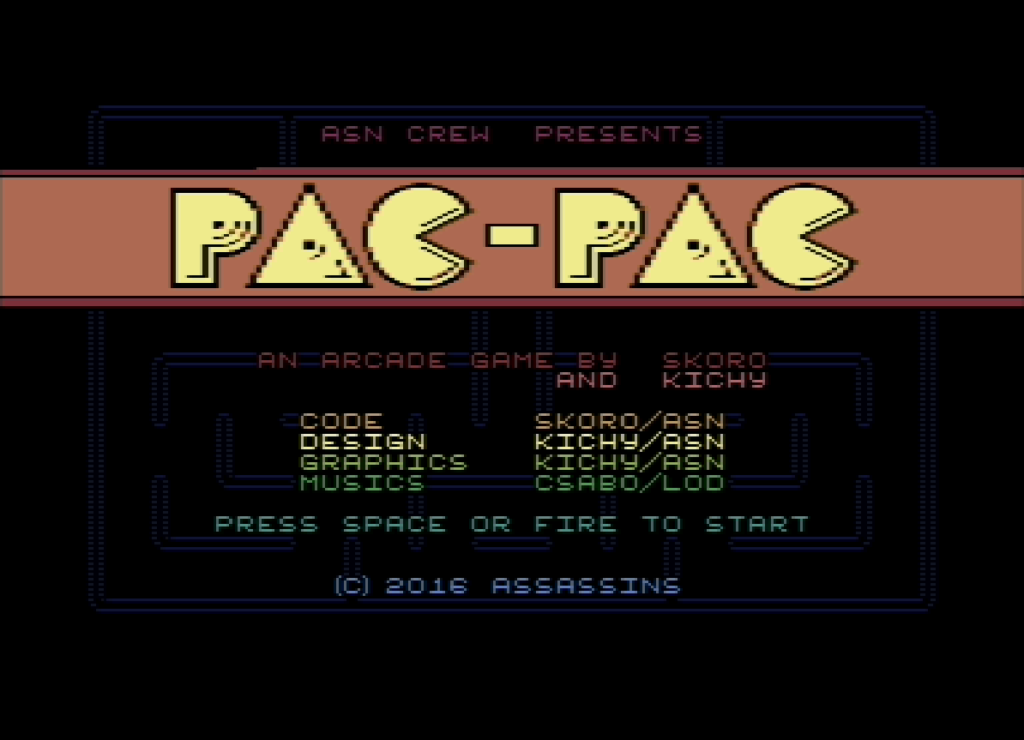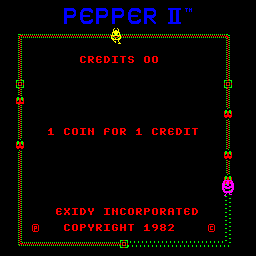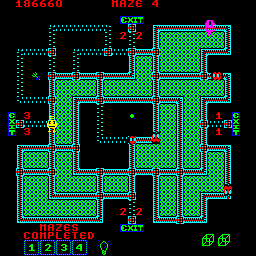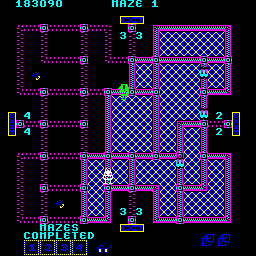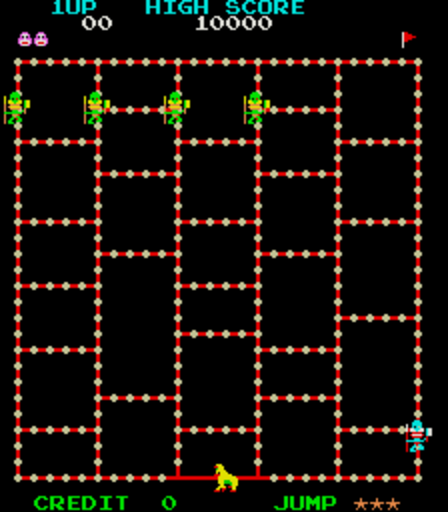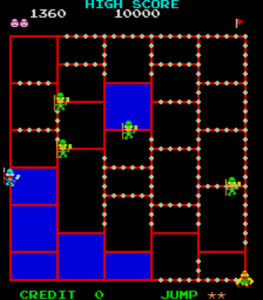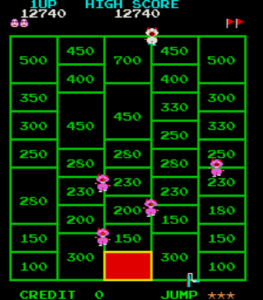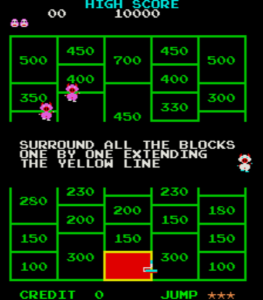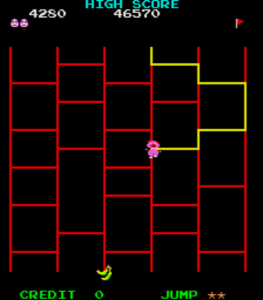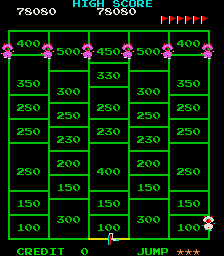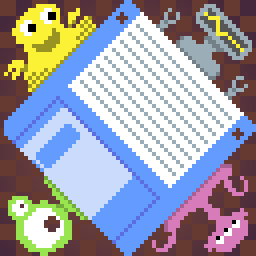
We love it when we find weird and unique indie games to tell you all about! Our alien friends to the left herald these occasions.
It’s one of those games that was made to fulfill the promise of a pun in the title, but turns out to be fairly interesting in its own right.
That’s not to say it’s perfect. Randomness plays way too much of a role in your success, although that could also be said of No Man’s Sky, honestly.
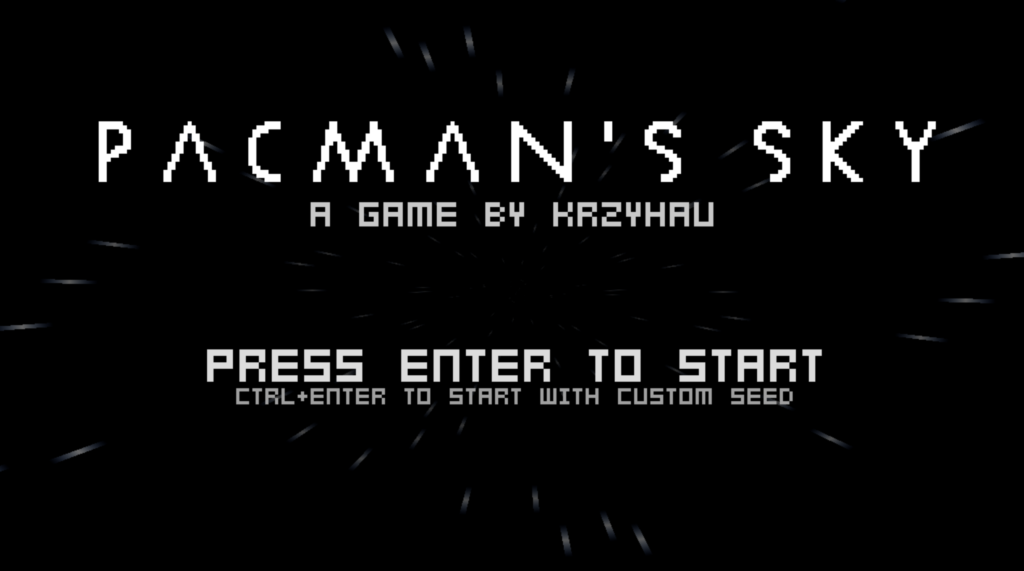
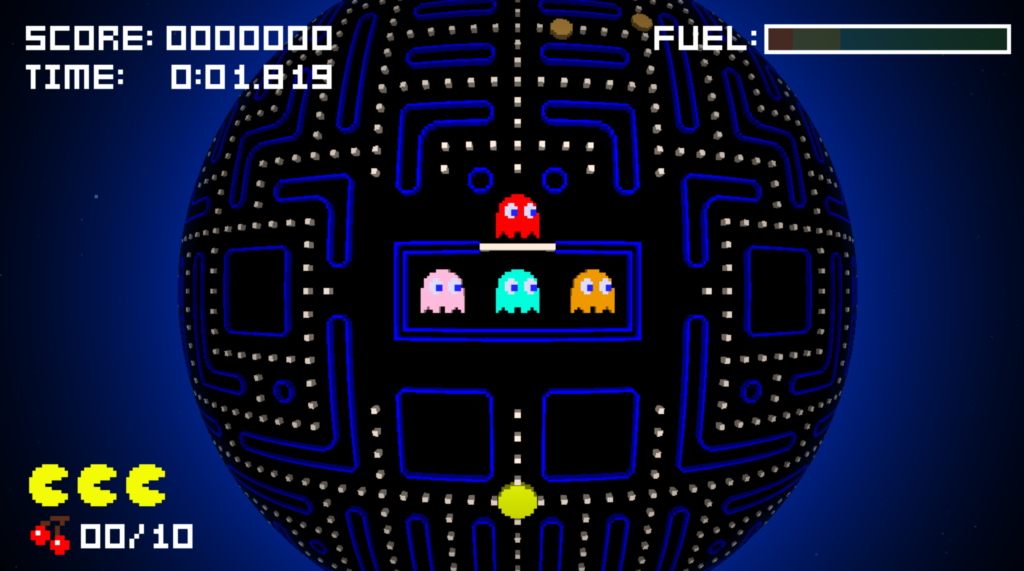
Pac-Man is stranded on a maze-like planet. The maze wraps around vertically and horizontally, but there are no helpful tunnels here to slow down the ghost pursuit, for the screen is always centered on Paccy. There is an escape rocket in the monster house, and the way inside opens up when you’ve eaten a sufficient number of dots. I wouldn’t bug out immediately though; as you eat dots, and also ghosts made vulnerable by the consumption of randomly-placed Energizers, you fill up a fuel meter in the upper-right corner of the screen. You want it to be as full as possible, especially in this first maze, where the game is still fairly easy.
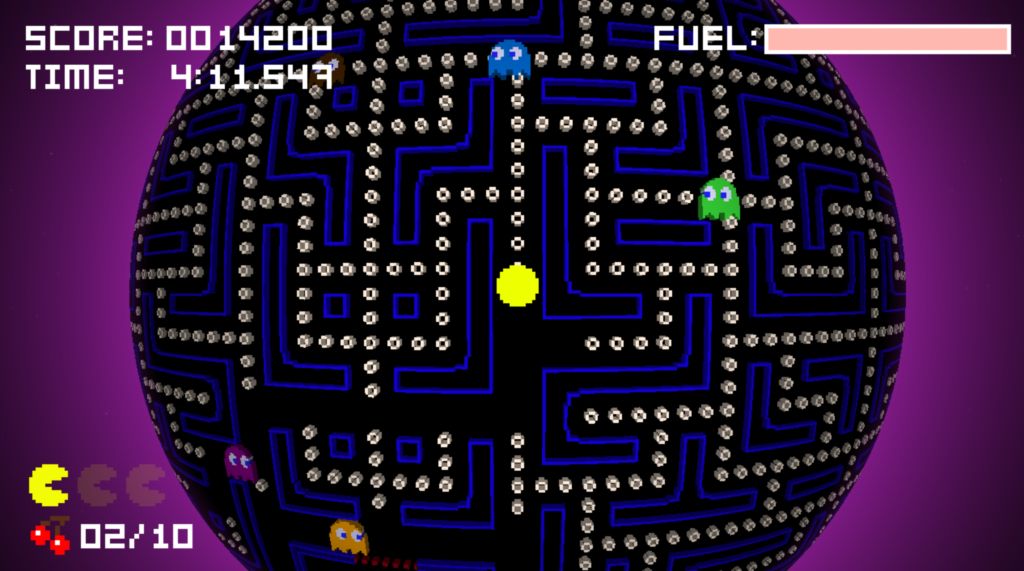
For you see, when you enter the rocket, you blast off into a 2D universe of other planets, and you need fuel to travel between them. (A bit of advice: the rocket’s thrust is always to the right! Press up-arrow to go forward, and up and down to steer.) Use the map in the lower-right to pick the next planet to crash onto, and explore a new maze. You don’t want to run out of fuel! Although you have a total of four Pac-Lives, if you run out of fuel in space, you lose regardless!
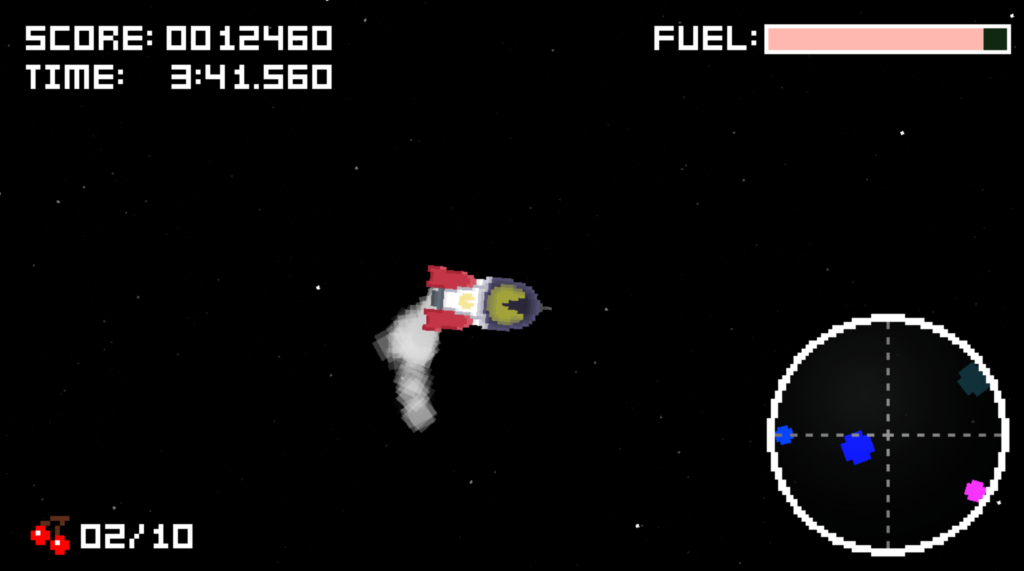
You’ll soon find that most planets are much larger than your starting world, and the game sends in a number of ghosts proportionate to its size! You could end up fleeing from nearly two-dozen ghosts! Fortunately, there are new colors of ghosts in the mix, and none of them are as avid a pursuer as the classic hues, although their meanderings will often block escape routes.
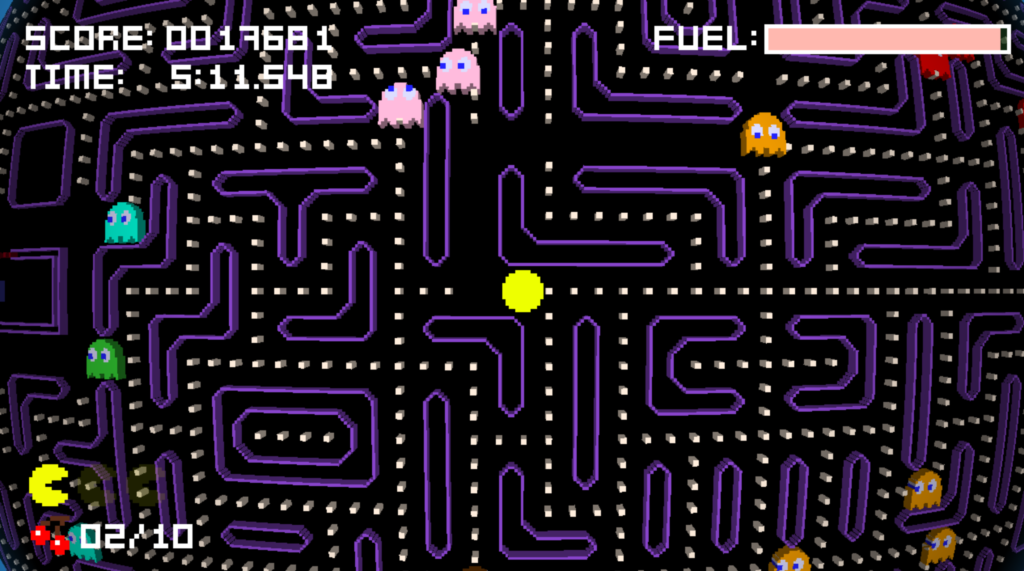
Your goal is to collect Cherries, which are sporadically scattered throughout the planets. You want to eat at least 10, then launch with a full fuel tank, and then press the Space Bar to warp out of the universe, and the game.
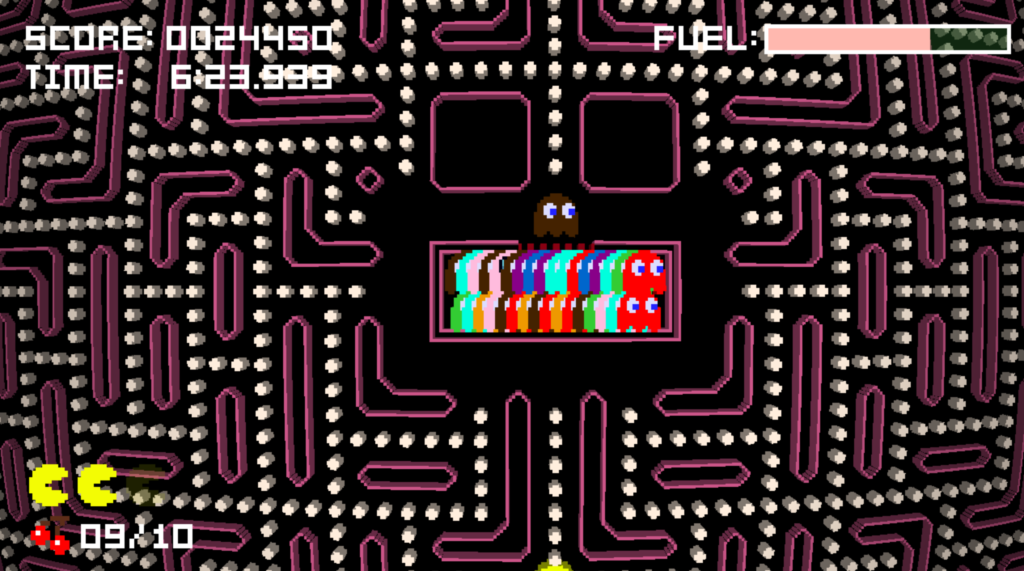
As I mentioned up top, randomness plays a huge role in your success. Cherries are placed completely randomly: you might find Cherries in the starting maze, you might find a planet with four Cherries on it and all you have to do is find them, but many planets will be Cherry-less. The best strategy is to scout each planet you visit for Cherries as quickly as possible, snarf up the ones you find while refilling your fuel tank with dots, then quickly evacuate and move on to the next planet.
Some tips:
- If you return to a planet you’ve already been on, it’ll be in the state that you left it! This usually makes it harder to refill your tank since there’s fewer dots, so get what you can and launch again.
- To help you avoid revisiting planets, I suggest targeting particular planet colors first.
- Energizers are placed randomly, and like Cherries, some planets don’t have any.
- Ghost vulnerability times are roughly on a par with those of the first maze of the original game, but with so much more terrain to travel through it’s usually highly difficult to make a clean sweep of all the ghosts, even if there’s only the normal four.
- The class ghosts have largely the same personalities as in the arcade games: Red chases you directly, Pink looks in the direction you’re facing and tries to get in front of you, Blue seeks to be on the other side of you from one of the Red ghosts, and Orange sometimes loses interest in attacking you when you get close.
- The new colors have ghosts that try to lurk behind you, ghosts that try to travel in straight lines regardless of what else is happening, ghosts that just bumble around, and even ghosts that just try to get away from everyone else, Pac or ghost.
- Like arcade Pac-Man, the ghosts periodically enter “Scatter Mode,” and give up the chase for a few precious seconds. Unlike the arcade game, the ghosts don’t reverse direction when either entering or leaving Scatter Mode. Your only clue to the behavior change is them turning away, or turning back towards you. That makes them a little less predictable.
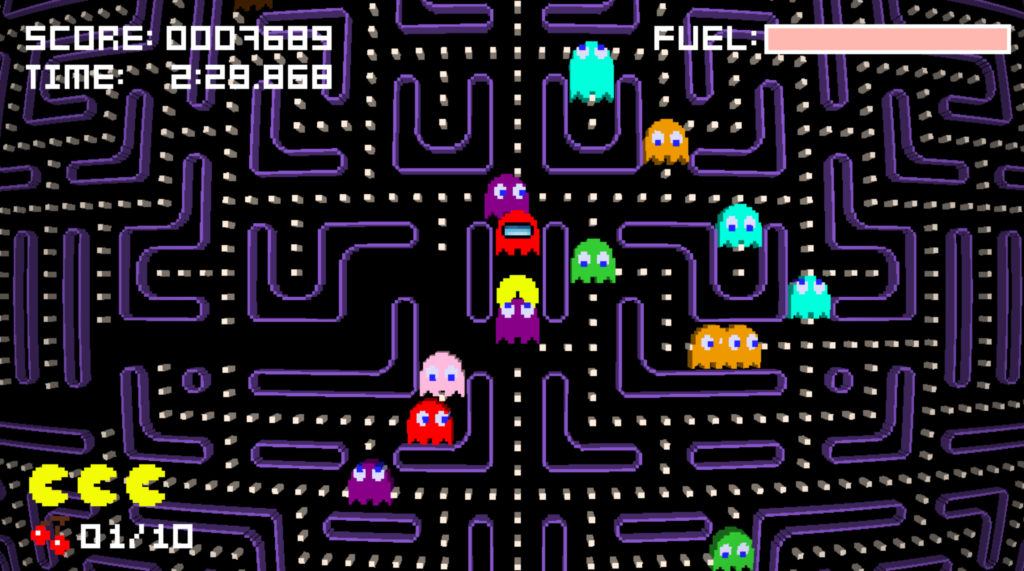
- Beware! Once in a while you’ll find a ghost that, instead of the usual blue eyes, has an Among Us visor. These ghosts will be one of the other colors, and the same personality as that color, but when you eat an Energizer, not only do they not become vulnerable, they also speed up greatly! If it’s one of the more vicious colors (Red or Pink), this makes eating an Energizer extremely dangerous!
- Ghosts become dangerous again the moment they reform from their eyes in the home. If you’re venturing in to get to the rocket, and a pair of eyes rushes in behind you, you can easily lose a Pac without having much control over it. This happened to me several times, it’s worth being wary of.
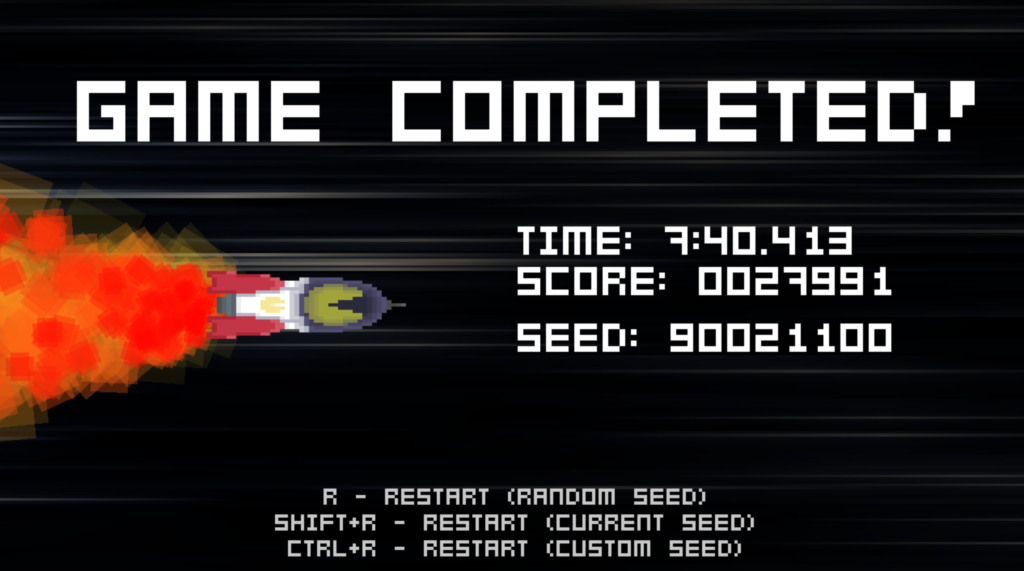
Pacman’s Sky (itch.io, $0)

